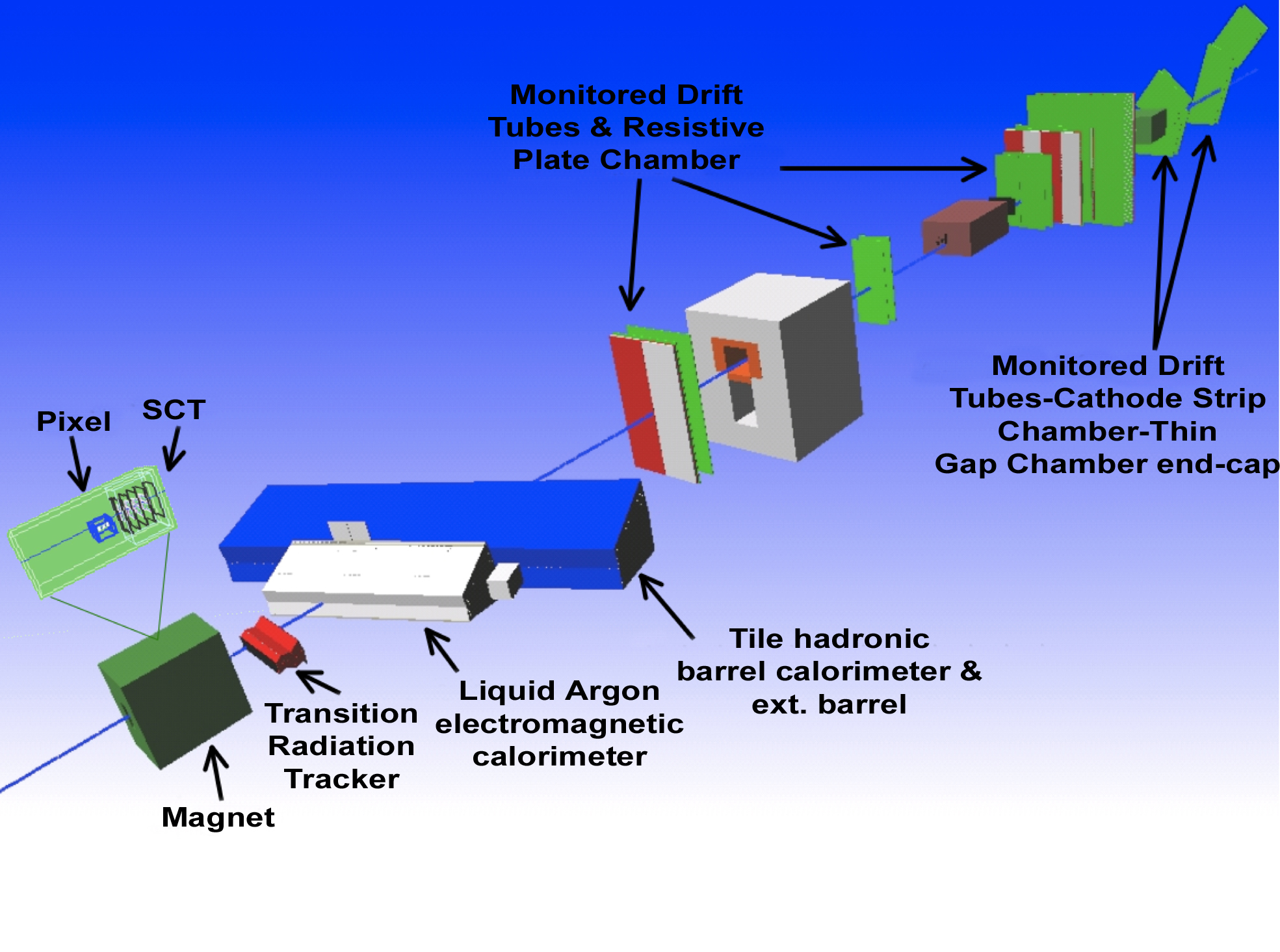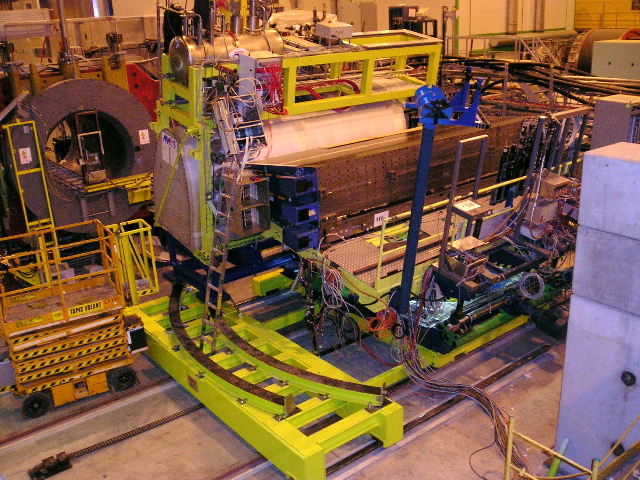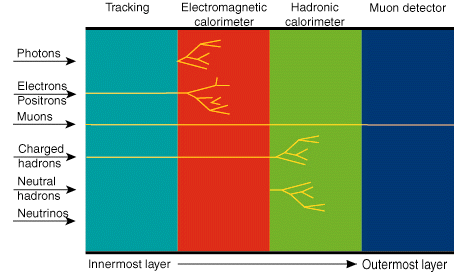Applied Statistics - ATLAS test beam data analysis
Introduction:
The ATLAS detector at CERN's LHC accelerator is a very large and complex detector consisting of several layers of different detector types, which each perform a series of tasks, which in combination will allow the ATLAS collaboration to explore the proton collisions from the LHC. In order to test these detectors, and to charactarize and optimize them, all parts of the detector were put together as a "slice" of the ATLAS detector, and submitted to an extensive testbeam program. One of the main challenges of the test beam was, that the composition of the beams in terms of particle types is not easily controlled by the accelerator people. It contains both electrons and pions, and so for each particle, it will have to be determined in situ which of the two it is. And that is now the task before you...


Layout of setup (not showing the Cherenkov detector) and the photo of actual situation at CERNs H8 testbeam facility.
The data:
The testbeam data for this analysis was taken at a beam energy of 2 GeV. Single particles were sent through the detector layers, and for each particle passing into the detector slice, the following numbers (among 100s of others!) were recorded:
- Cherenkov counts (1 number). The Cherenkov counter reacts on particles, which travels faster than the speed of light IN THAT MEDIUM, thus electrons will tend to give a larger signal.
- Transition Radiation Tracker (2 numbers, both integer). Number of hits for tracking in the TRT (first) and number of High Threshold (HT) hits (second) for identifying electrons, since these have a higher chance of creating such a hit.
- ElectroMagnetic Calorimeter (4 numbers). This type of detector stops particles interacting electromagnetically (i.e. electrons), which thus tend to deposit their energy AS EARLY as possible. The four numbers correspond to the energy deposit (in GeV) in each of the 4 layers of the ATLAS EM calorimeter.
- Hadronic Calorimeter (3 numbers). Much thicker than the EM calorimeter, this detector stops all particles except muons with more than 3-4 GeV in energy. Gives no signal, if no particle reaches the detector. Electrons hardly ever reach this detector.
- Muon detector (1 number). If a muons passes through, this detector gives a higher signal than when not. However, the coverage of the muon detector used was very small, and thus only few muons gives a signal.
Note:
The Cherenkov counter is not part of the ATLAS detector, but simply put into the beam in order to make the task of identifying particles easier.
For an illustration of particle interactions:

Comments:
Enjoy, have fun, and throw yourself without worries (to begin with!) at the data.
Last updated 14th of December 2017.